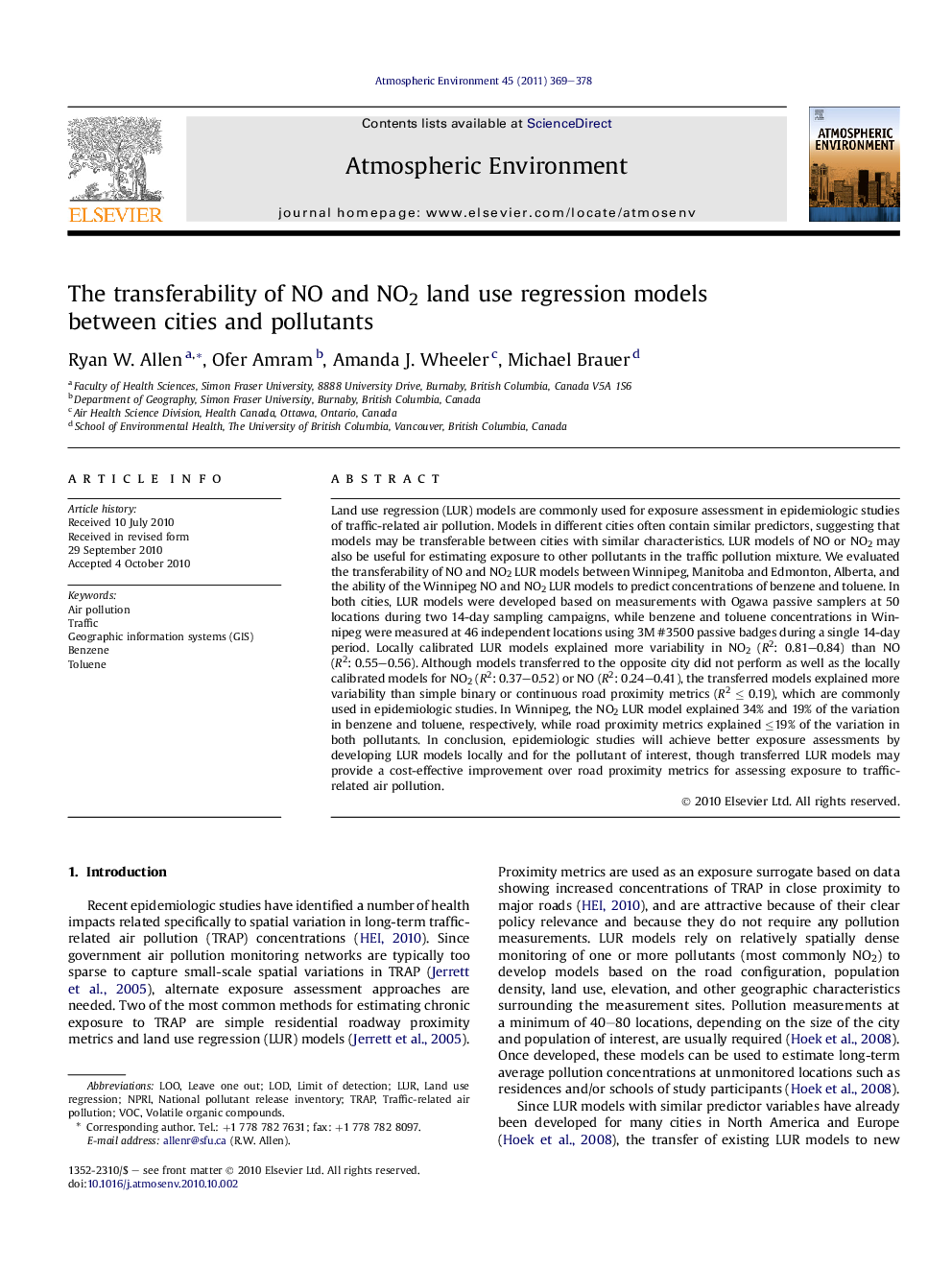| Article ID | Journal | Published Year | Pages | File Type |
|---|---|---|---|---|
| 4440174 | Atmospheric Environment | 2011 | 10 Pages |
Land use regression (LUR) models are commonly used for exposure assessment in epidemiologic studies of traffic-related air pollution. Models in different cities often contain similar predictors, suggesting that models may be transferable between cities with similar characteristics. LUR models of NO or NO2 may also be useful for estimating exposure to other pollutants in the traffic pollution mixture. We evaluated the transferability of NO and NO2 LUR models between Winnipeg, Manitoba and Edmonton, Alberta, and the ability of the Winnipeg NO and NO2 LUR models to predict concentrations of benzene and toluene. In both cities, LUR models were developed based on measurements with Ogawa passive samplers at 50 locations during two 14-day sampling campaigns, while benzene and toluene concentrations in Winnipeg were measured at 46 independent locations using 3M #3500 passive badges during a single 14-day period. Locally calibrated LUR models explained more variability in NO2 (R2: 0.81–0.84) than NO (R2: 0.55–0.56). Although models transferred to the opposite city did not perform as well as the locally calibrated models for NO2 (R2: 0.37–0.52) or NO (R2: 0.24–0.41), the transferred models explained more variability than simple binary or continuous road proximity metrics (R2 ≤ 0.19), which are commonly used in epidemiologic studies. In Winnipeg, the NO2 LUR model explained 34% and 19% of the variation in benzene and toluene, respectively, while road proximity metrics explained ≤19% of the variation in both pollutants. In conclusion, epidemiologic studies will achieve better exposure assessments by developing LUR models locally and for the pollutant of interest, though transferred LUR models may provide a cost-effective improvement over road proximity metrics for assessing exposure to traffic-related air pollution.
Research highlights► Locally calibrated land use regression models explained more variability in NO2 than in NO. ► NO and NO2 models transferred between cities did not perform as well as the locally calibrated models. ► NO and NO2 models transferred between cities explained more variability in those pollutants than road proximity metrics. ► The NO2 land use regression model explained more variability in benzene than road proximity metrics.
